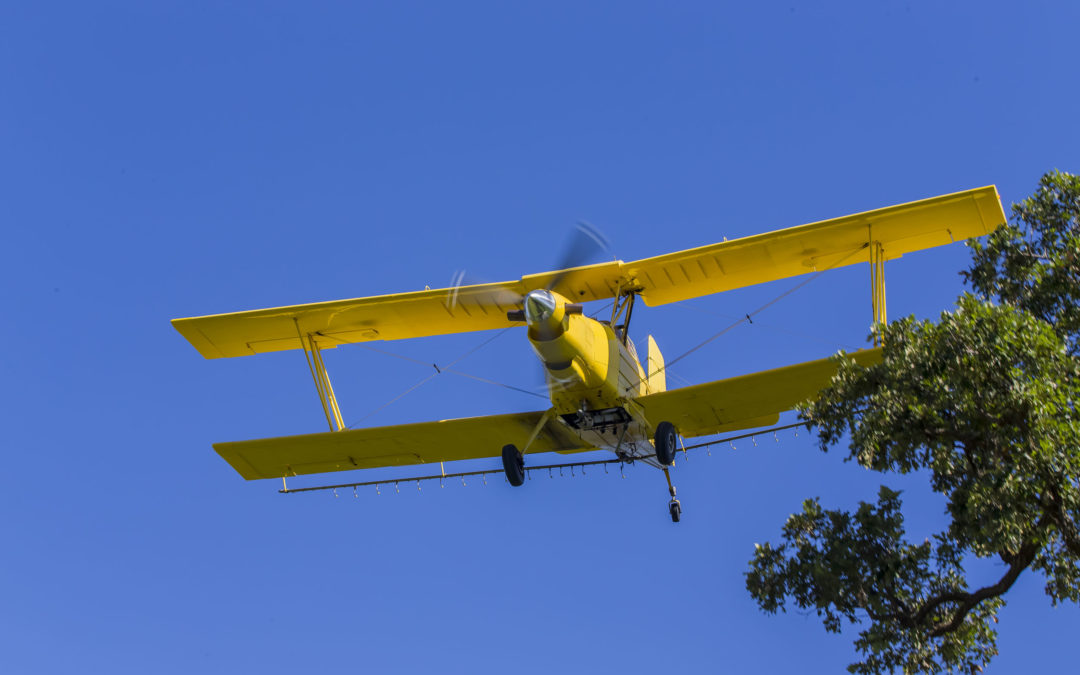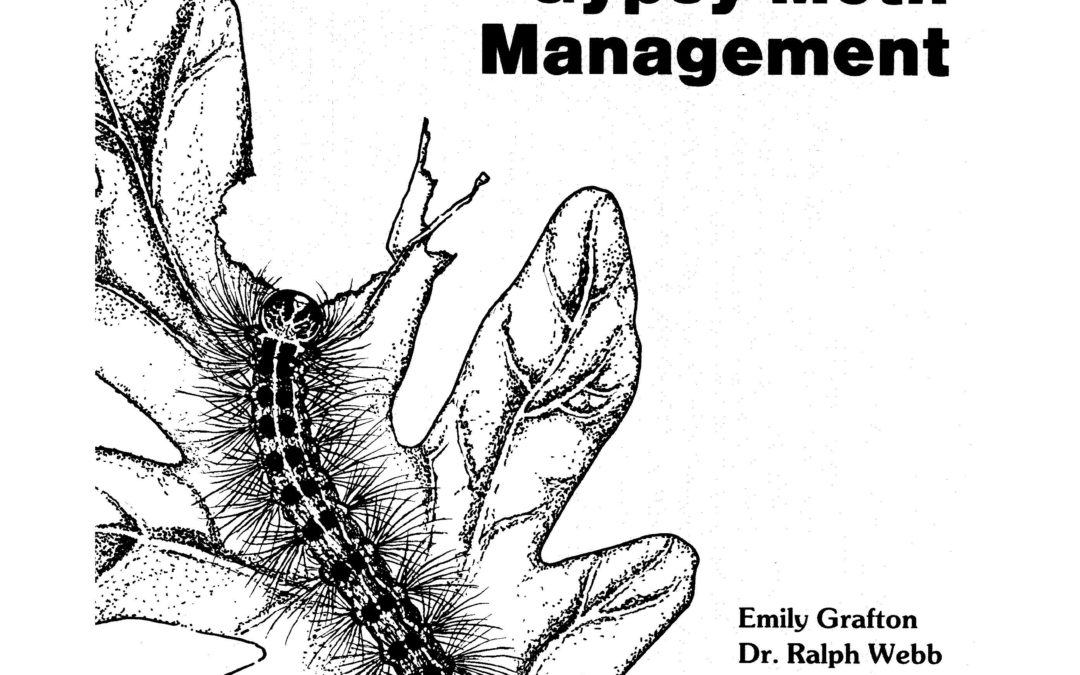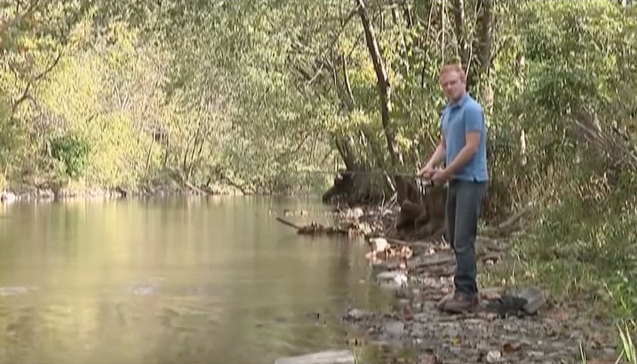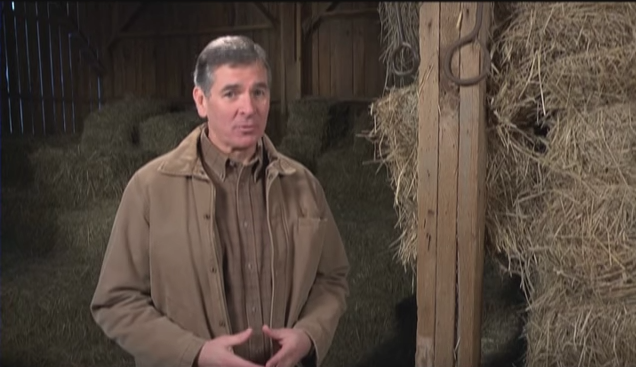
Arial Applicators
View our Aerial Applicator List on combatting gypsy moths

View our Aerial Applicator List on combatting gypsy moths

The gypsy moth has been considered an introduced forest insect pest for the past 120 years. Introduced from France, it was accidentally released into Medford, Massachusetts, around 1869. Since then, it has gradually trailed the spine of the Appalachian Mountains into West Virginia.
It has now become a permanent resided in the northeastern United States. Several of West Virginia’s Eastern Panhandle counties also have become permanently infested. The insect is continuing to radiate south and west from this area and appears sporadically in isolated spots throughout the state.


A video on regulations to keep the environment, mainly steams, safe from agricultural related problems. Brought to you by the Blair County Conservation District.

Promoting Wise Use of Natural Resources Since 1943
Conservation Pledge
I give my pledge as an American to save and faithfully to defend from waste the natural resources of my country – its air, its soil and minerals, its forests, waters and wildlife.
Community Outreach
Annual Tree Sales: The NCCD conducts a sale each April as a fundraiser. A variety of trees, ornamentals, and bulbs are sold. To receive a sale brochure, contact our office and you will be included on our mailing list.
Annual Poster Contest: Students in grades K-12 from throughout the county enter posters based on a conservation theme. In 2010, the contest centered on “Conservation Habits = Healthy Habitats”.

A combination of 10 multi‐log vane deflectors, two singles log deflectors, stream bank fencing and a stream crossing were installed through a Chesapeake Bay Mini Grant on the Mahantango Creek in the summer of 2009. The log deflectors redirect the flow of the stream to the center of the channel, reducing erosion while creating habitat for aquatic species.
It is important to use water wisely. Instead of watering your lawn and garden every day, look to water it deeply 2-3 times a week. It can also help to water early in the morning rather than midday in order to give your plants more time to absorb the water before it evaporates.
Drip irrigation systems can help to conserve water by only placing the holes by the plant. Xeriscape plants are a good choice for conserving water, because they can tolerate dry conditions and do not require a lot of water.
Using water wisely can be applied to anyone.
For more water conservation tips, click here.
It is very important to always read and use lawn and garden chemicals properly. Having an excess of chemicals can lead to these chemicals not being absorbed and increases the chances of these chemicals running off into waterways. Also make sure to not apply chemicals within a 100-foot radius of drinking water wells and springs. Please note whether these chemicals are safe for your pets and wildlife, and take proper precaution.
Always check the weather prior to applying chemicals. Do not apply chemicals before a heavy rain as this will not give your lawn enough time to adequately absorb it, and the excess will be washed away. Some chemicals may take a few days for your lawn to fully absorb it. Whenever possible, look to choose organic or less harmful options.
Using chemicals properly can be applied to any size property.
It is important to maintain your septic system properly. Leaks from septic systems can not only cause environmental issues, but also human health issues. Septic leaks into waterways can lead to these waterways being closed off to human activity due to dangerous bacteria levels. For an average sized home, it is recommended to have your system pumped and inspected every three years.
Maintaining septic systems may be more suitable for suburban and rural areas over urban areas that may have public sewer.
For more information on caring for your home septic, click here.
Salt used to remove snow and ice can be carried by runoff into local waterways. Once salt enters these water systems, it doesn’t ever go away. In Northumberland County, roads and sidewalks are often abundantly salted in the winter. The salt enters the groundwater and remains trapped there as it builds up. Over time and with precipitation, the salt leaches into nearby bodies of water and wells. This can have multiple negative impacts on the environment and humans. It can cause harm to aquatic wildlife and to individuals with certain health concerns. It can affect the taste of the drinking water. Also, it can cause corrosion to infrastructure.
There are a few salt alternatives including sand, chipping away at it with a shovel, and brining. If salt is your only option, apply it at the correct temperature range (should say on packaging) and apply the correct amount. Use a spreader to evenly spread the salt out, in order to avoid over-salting.
New research has shown an emerging concern worldwide for salt in the environment and its increased negative effects.
Did You Know? Since 1940, 15 million metric tons of road salt has been used in the U.S.
Using alternative methods to salting driveways and sidewalks are something that anyone is capable of doing.
Please clean up your pet’s waste. Their waste is not comparable to other wildlife, because they do not consume the same types of wild food sources wild animals consume, and therefore their waste does not break down as easily.
Pet waste can be carried due to runoff into the nearest body of water. Once in the water, the waste begins to decay, using up the oxygen in the water and releasing ammonia. A decrease in oxygen and an increase in ammonia can increase the water temperature and kill fish. Pet waste is also high in nutrients. These nutrients can encourage weeds and algae to grow. When water contains too many nutrients it can become cloudy and green.
It is also important to keep pet and farm animal waste at least 100 feet away from all drinking water wells or springs as their waste can seep into these and contaminate them.
Cleaning up after your pet is something that can be accomplished by anyone.
It is important to keep your car maintained properly. Prevent and stop leaks from your vehicle, as these can be carried away by runoff and end up in the nearest body of water. These chemicals can be very toxic to aquatic wildlife.
If you complete maintenance on your own car, pay special attention to the chemicals that can be recycled. Motor oil and antifreeze can be recycled. These substances should never be poured down a sink drain or sewer drain. These drains can lead into waterways. Places like recycling centers, auto shops, or gas stations may recycle used chemicals. Always check with your local borough for more information on recycling chemicals.
For more information on what to do with your used motor oil, click here.
Maintaining your car is something that anyone, no matter the size of your property, can do.
Tip: Go to a commercial car wash to wash your car. Most commercial car washes try to recycle the leftover water that reaches the ground. Some even use soaps that are environmentally friendly.
Look to add trees, shrubs, and groundcovers to your property. These plants can help prevent soil erosion, due to their deep root systems. Erosion can lead to sediment pollution within the watershed. Sediment pollution can be very problematic. They can increase waterway flooding, and cause brown, cloudy water. Brown, cloudy water can prevent light from penetrating through the water and block plants and animals from obtaining their food source.
Planting trees, shrubs, and groundcovers may be more suitable for larger properties that are able to support larger plants.
For help finding the recommended native plants to use, click here.
Look to limit the size of the area that you mow. By leaving parts of your lawn higher and untouched, it will allow stormwater to be intercepted and absorbed into the ground. Plants that are taller and have deep roots can hold more water and help to cut down on runoff and contaminants.
Keeping a smaller lawn helps save you money, time, and emissions by requiring less maintenance.
Keeping areas that are untouched can provide food, habitat, and resources for many native species. This will help the local ecosystem by providing pollinators and birds with adequate habitat.
Try to avoid mowing your lawn very short. Having taller grass blades can help to reduce runoff. Be sure to check with your local municipality for more information regarding ordinances they may have related to grass height on your property.
Limiting grass height can be suitable for both small and large properties. Limiting the size of your lawn may be more suitable for larger properties.
For more information on maintaining a healthy lawn and environment, click here.
It is important to make sure that leaves are removed from ditches, and street gutters in order to prevent storm drains from getting clogged and overflowing. This can result in flooding. It is also advised that leaves should not be raked into waterways. When leaves are raked into waterways they break down and release nutrients that can lead to algae blooms and vegetation growth.
Cleaning up after fallen leaves can be accomplished by both small and large properties.
It is important to pay attention to where the water from your downspouts go. Downspouts should be extended further into your lawn or garden in order to help increase the chance of the water being absorbed by plants. The best place to point a downspout is into a rain barrel, rain garden, or vegetatvie buffer, as these help to decrease the amount of runoff.
It is also important to make sure downspouts are not directed onto driveways or sidewalks. Driveways and sidewalks are impervious surfaces and assist the water to travel further, while also allowing it to pick up contaminants to carry with it.
Directing downspouts further into the lawn and away from impervious surfaces can be suitable for small and large properties.
Pervious surfaces are surfaces that allow water to drain through it. This allows the water to penetrate through the surface and into the soil allowing the water to be filtered of possible contaminants and soaked up by the soil. Pervious surfaces can help to prevent flooding, and decrease erosion. Examples of pervious surfaces include turf, permeable pavers, planting beds, and mulched beds.
Impervious surfaces work in the opposite way. These surfaces are solid and do not allow water to seep through. This allows the water to run off of the surface and into the nearest body of water. Along with aiding runoff, it also allows for the water to pick up any contaminant found on the surface or nearby roads and wash it into this body of water. These contaminants can then negatively affect the local aquatic species found in that body of water. Examples of impervious surfaces include asphalt, concrete, stone, and brick pavers.
Instead of choosing an impervious surface for a driveway or sidewalk, look to use a pervious surface to help the environment. It can also help prevent flooding issues.
Impervious surfaces would be more suitable for properties with sidewalks and driveways.
For more information on impervious surfaces, click here.
A rain barrel is an easy way to save water and cut down on runoff. Rain barrels work by connecting to the downspout. When it rains, the water drains into the barrel instead of into your yard. The barrel collects the water and stores it for later.
Rain barrels are beneficial not only because they cut down on runoff, but also because they can reduce water bills by conserving water. The stored water can be used in many different ways. It can be used to water plants (indoor and outdoor), wash cars, wash outdoor furniture, and many other ways.
A rain barrel can be used by both small and large properties.
To learn more about rain barrels and other ways to conserve water, click here.
To learn how to create a rain barrel connected to a downspout, click here.
Click below to view our rain barrel workshop!
Native plants are species that originated within a certain location. These species are well adapted to survive in Pennsylvania. Pennsylvania has about 2,100 native plant species.
When choosing native plants for landscaping, look to buy from nurseries, and not by removing the species from the wild. This guarantees that you are getting the correct plant needed for your property, and that you are not disrupting native species.
Native plants help to provide food for the native species within the ecosystem. These plants can better survive within the local conditions and provide more support to the ecosystem, than invasive plants. Native plants require less maintenance by the homeowner since they are already adapted to survive here, making them an easy choice for gardeners.
Native plants can be used by both small and large properties.
For information on landscaping with native plants, click here.
For information on choosing which native plants to buy, click here.
Installing a vegetative buffer around your property can help to reduce runoff by intercepting the flow of water and allowing the buffer to soak up the excess water. These buffers also help to decrease erosion found on the edge of your property due to the buffer’s root systems by holding onto the soil more.
A few facts about buffers:
-Removes 50% or more of nutrients and pesticides carried by runoff
-Removes 60% or more of pathogens carried by runoff
-Removes 75% or more of sediment carried by stormwater runoff
Vegetative buffers are also a good option for supporting the local wildlife. They provide food, cover for nesting, and shelter for a variety of wildlife and insect species. Some positives also include the ability to reduce noise and odor from your property.
Vegetative buffers are more suitable for larger properties, but possibly could be used with a smaller property.
Plants that are best used for buffers include native plants with deep root systems that prefer wet conditions. For more information on buffers, click below.
A rain garden consists of planting certain plants within a depressed area of a landscape. This allows for the plants to absorb the water through their root systems, rather than allowing the water to enter the storm sewer system. Allowing water to enter the storm sewer system increases the potential negative effects of runoff.
In order to reduce runoff, extend downspouts into a garden so that the plants are able to soak up the extra water.
A rain garden is a great way to increase native plants on your property (number 3). Native plants are easier to maintain, because they are well adapted to the local environment and require less assistance, while also benefiting the ecosystem.
Rain gardens can be suitable for small or large properties that contain depressed areas.
It is important to note that a good rain garden first starts with good soil. Learn how to obtain a soil test, click here.
Take this quick survey, and tell us what actions you would be willing to take to make your home more watershed-friendly. You can also share any barriers you may face trying to take action on your property.